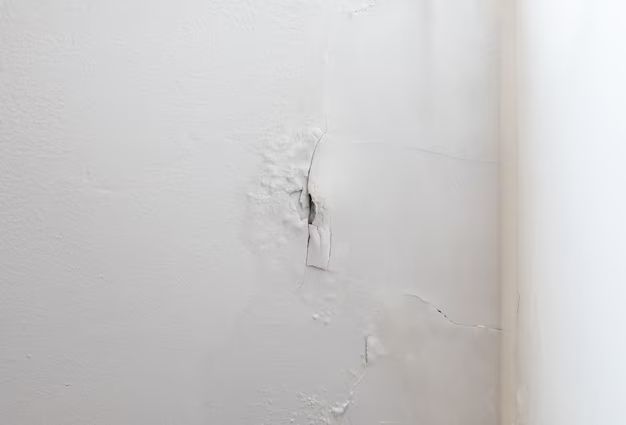It is quite common for drywall to develop cracks, especially in corner joints. Here are some quick answers about why drywall cracks and what can be done about it:
Page Contents
What causes drywall cracks?
There are a few main reasons drywall cracks can develop:
- Normal house settling – All homes shift and settle over time, which can cause stress on drywall seams and joints. This is the most common cause of drywall cracks.
- Seasonal humidity changes – As wood framing expands and contracts with changes in humidity, this movement can cause drywall fasteners to loosen and cracks to form.
- Poor drywall installation – If drywall corners are not properly supported or fastened, they become vulnerable to cracking.
- Door and window framing – Movement around doors and windows can transfer stress to nearby drywall.
Are corner cracks a problem?
Small cracks and seam separations are generally not a structural concern. However, wide cracks, bulging drywall, or multiple recurring cracks can indicate a more serious issue like:
- Foundation settling
- Roof or framing leaks
- Pest damage
If you suspect any of these problems, it’s a good idea to have a professional inspector determine the root cause.
How can I fix drywall cracks?
Here are some tips for repairing cracked drywall corners:
- Clean out any loose material and debris in the crack using a utility knife.
- Apply joint compound or Spackle paste into the crack and smooth over with a putty knife.
- Allow compound to fully dry and sand smooth.
- Apply 1-2 more thin coats of compound, allowing it to dry and sanding between coats.
- Prime and paint repaired area.
Mesh joint tape can also be embedded in the first layer of compound for wider or more severe cracks to add strength.
How can I prevent future cracks?
It’s virtually impossible to prevent all drywall cracks, but here are some tips to minimize them:
- Use quality, thick drywall rated for humidity resistance.
- Stagger drywall seams when hanging.
- Ensure framing and drywall corners are securely fastened.
- Seal exterior walls properly to limit seasonal moisture changes.
- Caulk and seal where drywall meets other materials.
- Avoid over-tightening drywall screws.
When should I call a pro?
Contact a drywall contractor or handyman for help if:
- You have recurring widespread cracks that won’t stay repaired.
- The cracks are very large, gaping open, or bulging.
- You want to skim coat large areas to hide cracks and imperfections.
- The cracks may indicate a structural issue beyond just the drywall.
Professionals have specialized tools, materials, and techniques for long-lasting drywall crack repairs.
Conclusion
Minor drywall cracks in corners and seams are common in most homes. While annoying, small hairline cracks are typically just a cosmetic issue caused by normal shrinkage and settlement. Larger cracks or cracks that recur after repair may indicate a more serious foundation or structural problem. Basic cracks can often be repaired with some joint compound and paint, but don’t hesitate to call a drywall pro for a long-term fix if DIY efforts don’t do the trick.
